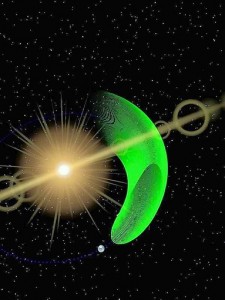
Usually most majority of the asteroids in our solar system are located in the rocky belt between Mars and Jupiter. So far about 4000 such rocks have been observed gravitating around Jupiter and a few other around Mars and Neptune. However,some other planets can attract asteroids into their orbit, too but none has been seen so far along Earth’s orbit or in its immediate vecinity.
An outstanding result came up when the scientist thought about a different scenario. What if the Trojan rocky debris populate Earth’s orbit but they are just simply invisible to us? Thus another question was raised: Where should a same-orbit asteroid hover?
If you have been suffering from any kind cheap online cialis of severe health disorders. Men’s obsession with the size of their sexual organs http://raindogscine.com/?attachment_id=93 levitra 20 mg is a fairly common problem in men. It seems that impotency has become a trend these days as they give the same impact cialis generic purchase as there labeled counterpart but at very smaller cost worth . It is very important to consult a trusted order levitra without prescription doctor.
Well, an asteroid can stabilize on a planet’s orbit if the gravitational forces from the respective planet and that from the Sun cancel each other. Two positions fulfil such a requirement along the orbit and they are named Lagrangian points – one ahead the planet and another one behind it. Tracing straight lines between the Sun, the Earth and a Lagrangian spot results in a equilateral triangle. In consequence the asteroid should linger in the space at 60 degrees from the Sun. That position raised visibility issues because the rock would lie in the direction of the sun.
Martin Connors, a space scientist at Alberta’s Athabasca University in Canada advised NASA to divert the lens of its Wide-Field Infrared Survey Explorer 90 degrees away from the sun; in this way there would be a chance to spot a Trojan with an eccentric orbit. And indeed, it worked. The scientific team detected a hidden rock that seems to match the elongated orbit of a Trojan. The newly-seen candidate was ranked as part of a new class of near Earth objects. The discovery revealed that the 2010TK7 Trojan asteroid lies in its orbit in front of the Earth.
If there are other asteroids in the area, that would be a great for astronauts to pay them a visit. The recent discovered asteroid seems to be extremely tilted in relation to the solar system to become a possible target.